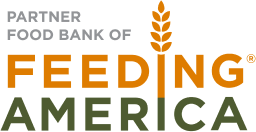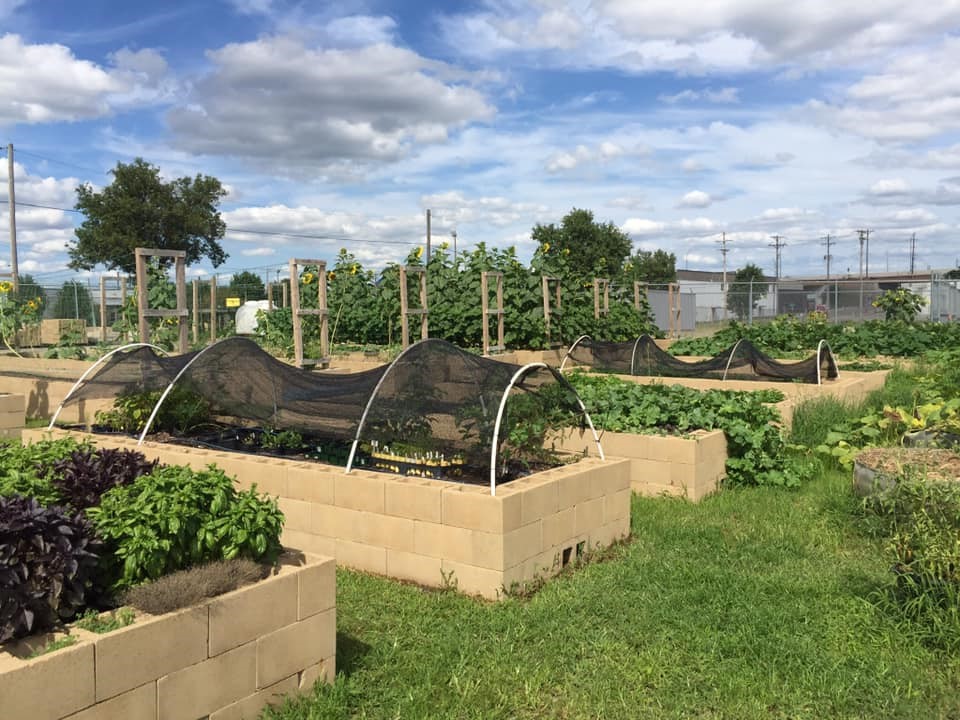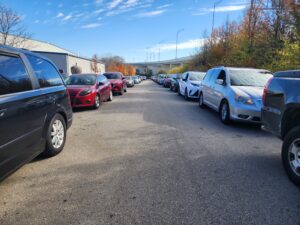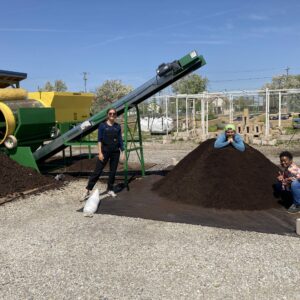How we stock our shelves
Food in our warehouse comes from a variety of sources. Here’s an overview.
By: Emily Gallion, Grant & Metrics Manager/Advocacy Manager, and Caitlyn McIntosh, SNAP/Outreach Lead
One of the most common questions we get is, “Where does your food come from?”
The Foodbank receives a wide variety of food, including fresh produce, meat products, and shelf stable food, from six main sources: food drives, food rescue, federal programs, food purchases, and our own Urban Garden.
Last year, The Foodbank distributed just short of 18 million pounds of food — over one-third of which was fresh food. How do we go about sourcing a wide variety of healthy foods for our partner agencies and direct-service programs? Read on to find out!
Food Drive
Food drive product is the type of food that typically comes to mind when you think of a food pantry. This category is made up of nonperishable product such as canned goods, boxed meals, dry pasta, and more.
We are fortunate to have a network of community partners who regularly host food drives on our behalf. We also have several annual large-scale drives. These include Food for Friends, held in partnership with Kroger and WDTN. The campaign looks a little different this year as no physical food is being collected due to the pandemic. You can still contribute to the drive monetarily by visiting thefoodbankdayton.org/donate and select Food For Friends in your donation through December 24.
After food drive food is collected, it has to be sorted by product type so that it can be distributed to our partner agencies. Typically, this is a task that is handled by volunteers. More recently, we have been hiring temporary labor to help sort donated product. Due to limited spacing in our warehouse, it is difficult for volunteers to socially distance while sorting food.
People sorting food also check the expiration to make sure the food is still safe for consumption. You may, at times, receive food from The Foodbank that is past its expiration or “best by” date.
Contrary to popular belief, many types of perishable food is safe to eat a considerable amount of time after the date printed on the package has passed.
To learn more about past-dated food, check out the USDA’s resource here.
Food Rescue
The Foodbank “rescues” a portion of food we distribute from the back docks of grocery stores. This food is often perishable food that we do not receive through food drive donations: fresh produce, bakery items, and more.
Currently, we pick food up from 42 retail stores. Our food rescue program is dual benefit: it diverts food waste from the dumpster while putting food on the tables of families in our area.
We are so grateful for the partnerships we have with our retail partners. This work helps them to reduce their waste footprint while enabling us to provide a healthy, well rounded diet to Miami Valley families.
Federal and State Commodities
Some of the food The Foodbank receives is purchased by state and federal entities on our behalf through a variety of programs.
This is an acronym-heavy section, but the central concept is fairly simple: a state or federal entity purchases food product and contracts food banks to distribute it to food insecure households.
Here is a breakdown of different commodities we receive:
The Emergency Food Assistance Program (TEFAP): This is the largest subcategory we receive. TEFAP food is purchased by the United States Department of Agriculture (USDA) and includes trade mitigation product purchased to offset the effects of trade tariffs on China. Read more about trade mitigation on our previous blog post.
Ohio Food Program (OFP) and Ohio Agricultural Clearance Program (OACP): These state-funded programs are administered by our partners at the Ohio Association of Foodbanks (OAF) as a supplement to TEFAP product. OFP foods are usually “center-of-the-plate” food such as meat, while OACP food is typically fresh produce.
Coronavirus Food Assistance Program (CFAP): This new program, more commonly known as Farmers to Families, consists of food boxes purchased by the USDA and distributed by food banks. Food boxes commonly include fruit, vegetables, dairy, or frozen meat.
Commodity Supplemental Food Box Program (CSFP): Also known as Senior Boxes, these boxes are provided to seniors at qualifying income levels to supplement a healthy diet. Foods included are canned goods, cheese, and shelf stable milk. Know somebody who might benefit? Find out if they qualify here.
Food Purchases
Though the food we receive is primarily donation based, we do have a budget in place to purchase food that isn’t often donated. These are items such as proteins, fresh produce, specific dietary needs, culturally appropriate foods, and more. This budget allows us to cater to the needs of our clients to ensure we are assisting them in leading a healthy life.
Additionally, The Foodbank hosts several programs that require food to be purchased. Our Good-to-Go Backpack program is a weekend program that sends a variety of shelf stable items home with school aged children. We are currently distributing backpacks every week to participating schools and community centers.
Our Food Rx program, in partnership with Dayton Children’s Hospital, allows physicians to write a “prescription” for a food box for families who have screened positive for food insecurity and are not already receiving food assistance. Because these families may have specific dietary requirements due to being in the hospital, the foods in these boxes are purchased to cater to those needs.
Urban Gardening
The land that The Foodbank sits on is made largely of old parking lot space from the previous owner. In order to make use of this portion of our lot, we decided to build a 75 raised-bed urban garden that sits on top of the concrete.
Our garden is a great resource for food education, but also serves as a practical way to source food at a fraction of the cost of purchasing. Through the garden, we are able to grow fresh produce that may not be donated in large quantities or would otherwise have a short shelf-life. We have grown peppers, leafy greens, tomatoes, and more to distribute directly into the community through our on-site drive-thru.
Last year, 7,709 pounds of the produce we distributed came straight from our garden! Stay tuned for future updates as we continue to develop our garden’s production.
As you can see, there is no short answer to where our food comes from. However, we could not be the operation we are without all of these moving parts. The truth is, The Foodbank is sort of like a box of chocolates – you never know what you’re gonna get.





No comment yet, add your voice below!